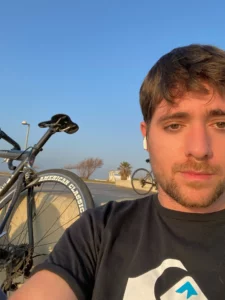An executive protection specialist is more than just a bodyguard. They’re a blend of a close protection officer, security advisor, risk management expert, and, often, a confidant. They operate with meticulous precision, trained acumen, and unwavering focus to ensure the safety of individuals, typically high-profile figures in society who might be at risk due to their occupation, net worth, location, or even controversies.
Understanding the daily life of an executive protection specialist is like peering into a world that thrives on unpredictability, where every new day poses fresh challenges, and every decision can make a world of difference. You might have a general idea about what they do; after all, you’ve seen them in movies, standing tall in their sharp suits, scanning the environment with an eagle eye. But real life isn’t scripted. So, what does a day in their life actually entail?
Imagine waking up each day with the knowledge that you’re responsible for the safety of another individual, sometimes even their family. It’s not just about brute strength or weaponry skills, but also strategic planning, advanced problem-solving, deep understanding of human psychology, excellent communication skills, and so much more.

From the moment they start their day, an executive protection specialist is switched on, their senses fine-tuned to detect anything out of the ordinary. They dive into briefings and security updates, devise and revise plans based on evolving threat levels, conduct reconnaissance, manage and adapt to varying environments, and interact professionally with their clients, all the while constantly staying alert to potential risks.
And it doesn’t end there. Even during downtime, they engage in continuous learning and training, always staying ahead of potential threats and the latest protection strategies. They work under constant pressure and stress, which they must manage effectively to maintain peak performance.
In this article, we’ll walk you through their daily lives, shedding light on their routines, responsibilities, and the sheer dedication that goes into their job. Whether you’re considering a career in executive protection, or you’re just curious about what their job involves.
Starting the Day: Preparation and Planning
When you’re an executive protection agent, your day doesn’t merely “start.” It commences with a high level of preparation and planning, similar to a soldier preparing for a mission. Let’s delve into the specifics of their morning routine.
Morning Briefing: Most days kick off with a security briefing. These sessions can involve various team members, from other protection officers to intelligence analysts and even sometimes the client. These gatherings provide updates on any potential security threats, the client’s schedule for the day, and the planned travel routes.
Daily Fitness Routine: Fitness isn’t just a hobby for these professionals; it’s a critical part of their job. Regular physical exercise helps them stay in optimal condition, essential for potential physical encounters and the overall demands of their role.
Equipment Check: They meticulously examine all security equipment and gear to ensure everything is in good working order. This process could include checking protective vehicles, communication devices, or personal protective equipment.
Security Plan Review: Every detail of the day’s plan is reviewed and memorized, from travel routes and meeting locations to emergency exit strategies and backup plans. Every element is vital for the professional, as it’s their responsibility to foresee any possible risks or issues that may arise.
Reconnaissance: If a new location is on the day’s agenda, they’ll typically conduct a reconnaissance of the area. This involves surveying the location for any potential security concerns and understanding the layout to plan for quick evacuation routes if necessary.
Personal Preparation: Lastly, they also get ready personally, this means dressing appropriately, often to blend in with the environment and not draw unnecessary attention. They also have to mentally prepare themselves for the day ahead, tuning in their senses to high alert.
It’s important to understand that no two days are the same in this profession. Some mornings might involve rushing off to an unscheduled meeting, while others might require immediate action due to a security threat. Preparation and planning form the foundation of their day.
The work environment

If you’re thinking that an executive protection specialist’s work environment involves spending the majority of their time in a swanky corporate office or a luxurious mansion, you’re in for a surprise. Their workplace isn’t confined to a single place, and it is as varied as the tasks they perform. Let’s explore some of the common environments they navigate.
Corporate Settings: While it’s true that they might spend some time in corporate environments, this setting doesn’t usually encompass their entire workday. Here, they might coordinate security measures with other staff, attend meetings, or oversee the safety of the client during their work hours.
Travel: Be it domestic or international, they often find themselves on the move, ensuring safe transit for the client. This could be to and from meetings, events, or on longer trips. They’re well-versed in executing security measures on private jets, in luxury vehicles, and other modes of transportation.
Public Spaces: Public outings, such as social events, public speeches, or simple leisure activities like a walk in the park, require their presence too. Here, their task becomes more complex due to the unpredictable nature of public spaces. They must remain exceptionally alert to their surroundings and anyone who comes in close proximity to the client.
Residential Security: Their job doesn’t end when the client reaches home. They’re responsible for securing the client’s residence, ensuring all safety measures are in place and no threats are present. This may involve working in tandem with other residential security staff.
Hotel Rooms and Temporary Lodging: When on the move, they’re responsible for securing temporary residences like hotel rooms or guesthouses. They’ll usually conduct a thorough security sweep of the area before the client’s arrival and coordinate with local security.
Unexpected Locations: Given the nature of their role, they must be prepared to secure any location at a moment’s notice. This could include hospitals, underground parking lots, government buildings, or rural areas. The key is their ability to quickly assess and secure unfamiliar environments.
Their work environment is far from static. It changes from moment to moment, challenging them to adapt swiftly to ensure the client’s safety. They’re always on the move, always on the watch, and always need to be ready to face whatever comes their way.
Core Duties and Responsibilities
Despite the unpredictability that each day brings, there are several key responsibilities that remain constant in their routine. They are the pillars that uphold the specialist’s role and contribute to the overarching goal of safeguarding the client:
Threat Assessment: One of the first tasks is conducting a threat and risk assessment. This involves identifying potential dangers that could impact the client’s safety, from cyber threats to physical attacks. Understanding these allows them to develop robust and effective security strategies.
Security Planning: Armed with the threat assessment, they devise a detailed security plan. This includes determining safe travel routes, backup routes, identifying safe locations, planning for emergencies, and coordinating with other team members to ensure everyone understands their role.
Physical Protection: This one’s rather obvious. They must stay close to the client, ready to intervene if any physical threat presents itself. This can involve escorting the client through public spaces, providing crowd control, or even driving the client’s vehicle.
Surveillance: Keeping a watchful eye on the client’s surroundings is crucial. They must monitor for any unusual activity, maintain awareness of who interacts with the client, and be vigilant for signs of potential danger.
Communication: They maintain communication with other team members, update them about the client’s movements, and coordinate responses to any potential threats. Good communication skills are essential for effective team collaboration.
Emergency Response: In the event of a crisis, their role quickly shifts to emergency response. This could mean evacuating the client, administering first aid, or coordinating with law enforcement agencies.
Documentation and Reporting: At the end of the day, they might need to prepare reports detailing the day’s activities, incidents (if any), and recommendations for further action. This could also include updating the threat assessment based on the day’s observations.
Interactions with the Client

One of the most delicate aspects of the executive protection specialist’s job involves interactions with the client. Despite their high-stakes role, they must maintain a professional yet cordial relationship.
Respectful Distance: An important part of their job is to maintain a respectful distance. Even though they are almost always in close proximity, they must ensure they aren’t intrusive. This delicate balance allows the client to carry on with their day unhindered, while the specialist ensures their safety.
Communication: Clear and concise communication with the client is key. They keep clients informed about any potential threats, security plans, and changes in schedule or route. However, they also have to ensure that they don’t alarm the client unnecessarily. This calls for a delicate handling of information, sharing what’s necessary and holding back what could cause undue worry.
Discreet Service: A major part of their job is to blend into the background, ensuring that the client’s routine isn’t disrupted. Whether the client is at work, home, or a social event, they provide their protective services discreetly, often without the client or others even noticing.
Building trust: Building a relationship based on trust is crucial. The client needs to feel confident that their safety is in reliable hands. This trust is built over time, through consistent professional conduct, respecting confidentiality, and efficient execution of their duties.
Adapting to Client’s Lifestyle: Each client is different, with unique routines, preferences, and temperaments. They have to adapt to each client’s lifestyle while maintaining their professional standards. This might involve adjusting to odd working hours, dealing with demanding situations, or navigating complex social scenarios.
They need to be more than just protectors; they must be excellent communicators, adaptable, and understanding, all while maintaining a firm commitment to their professional obligations. They aren’t just safeguarding the client’s life, they’re also contributing to the quality of it.
Downtime and continuous learning

In such a high-pressure role, it’s essential for an agent to have downtime for self-care and professional development. But even their downtime activities often tie back into their overall mission. Let’s examine how they make use of their off-duty hours.
Rest and Recuperation: A well-rested protector is an effective protector. Adequate rest and sleep are crucial, not just to maintain their physical health, but also to ensure they remain sharp and alert.
Fitness Routine: Physical fitness is not just a part of their job requirements; it also often forms part of their downtime. Regular exercise helps them maintain their strength, stamina, and overall wellness. Some might prefer a quiet run, others might enjoy a gym workout, and some may even opt for martial arts.
Continuous Learning: In this rapidly evolving world, staying updated with the latest security practices, technologies, and threats is crucial. They may spend part of their downtime attending webinars, reading up on recent developments, or obtaining additional certifications.
Scenario Training: Practice makes perfect. They often rehearse various security scenarios, even in their off-duty hours. This could include defensive driving practice, first aid drills, or situation response strategies.
Leisure Activities: Just like anyone else, they too have personal interests and hobbies. Whether it’s a quiet evening with a book, a movie night, or outdoor activities like hiking, these moments of leisure help them relax and recharge.
Self-reflection and analysis: They might also spend some quiet time reflecting on their work, analyzing situations they handled, contemplating how they could do better, and planning for future assignments.
Stress and pressure management
Operating regularly in a high-stakes environment, they inevitably face stress and pressure. Yet, they must always remain calm, collected, and decisive. So, how do they manage these challenges?
Mental Exercises: Practicing mindfulness and meditation can be a part of their stress management regime. These exercises can help them stay focused, maintain emotional balance, and manage the rigors of their work.
Healthy Nutrition: Eating a balanced, nutritious diet can provide the necessary energy and boost their resilience against stress. Keeping hydrated and cutting back on caffeine and alcohol also aids in managing stress levels.
Adequate Rest: Ensuring they get enough sleep is vital. A good night’s sleep rejuvenates the mind and body, improving their capacity to handle stress.
Debriefing Sessions: Discussing the day’s events with their team members can be therapeutic and also provide learning opportunities. These sessions allow them to offload stress, gain perspective, and improve their handling of similar situations in the future.
Professional Support: In some cases, they may turn to professional help such as therapists or counselors trained in dealing with occupational stress. This professional support can equip them with strategies to effectively cope with the mental demands of their job.
Final Thoughts

The life of an executive protection specialist is a complex tapestry of meticulous planning, high-pressure decision-making, and unwavering commitment to the safety of the client. Their days are filled with careful attention to detail, robust preparation, and decisive actions. Yet, it’s not all about their duties. They also make time for self-care, continuous learning, and managing the stress that comes with the job.
This profession demands not just physical strength and strategic acumen, but also superior interpersonal skills and emotional intelligence. It requires an ability to seamlessly blend into the background while being ready to spring into action at a moment’s notice. Their work is a careful balance of respecting the client’s space and lifestyle while ensuring their safety.
But despite the immense pressures and demands, they continue to navigate this intricate role with resilience and dedication. Whether it’s a routine day or a high-stakes situation, they are always ready to protect, serve, and maintain the tranquility in their client’s life.
Through this detailed glimpse into their daily life, it becomes clear that it’s more than just a job, it’s a commitment to a life where the safety of others is paramount. It’s about providing a sense of security that allows their clients to live their lives fully and freely. For those who choose this path, it’s a calling marked by courage, devotion, and an unyielding commitment to the art of protection.

